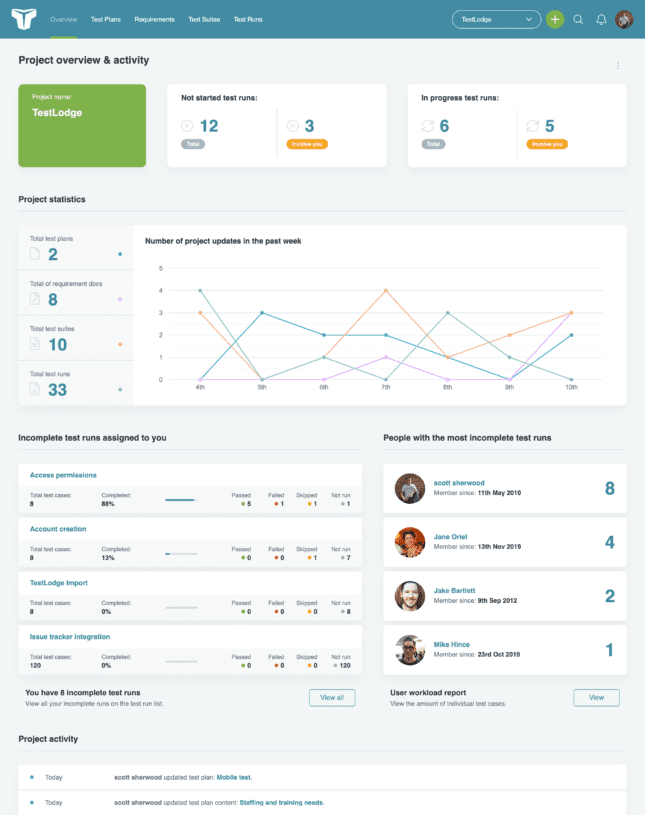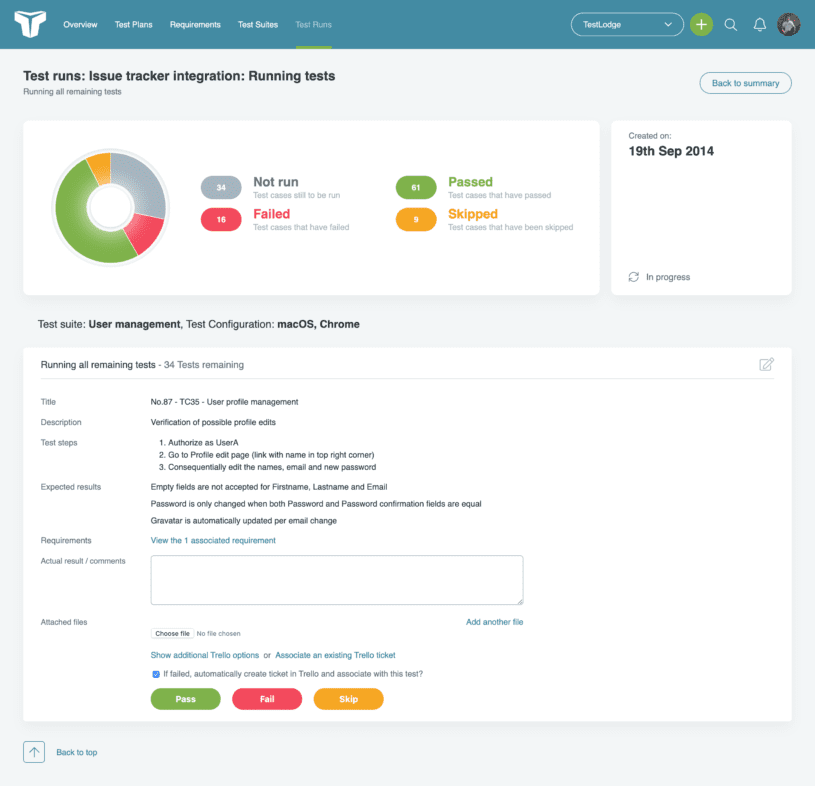Software testing requires a lot of planning and organization. To comprehensively know the progress of your testing projects and ensure test coverage of all necessary components, you need to define a process and determine a set of tools that will support that process. Additionally, with larger products and teams, you often need to distribute responsibilities across team members.

Traditionally, and still common today, testing teams use elaborate spreadsheets to document test cases. This method can work, but a static document like this is not the most scalable or collaborative solution. Spreadsheets limit the ability to track progress, view results, and assign specific tasks to team members. At the other end of the spectrum, you will find several test case management tools bloated with features. Tools like these complicate the testing processes and demand more time than necessary to manage tests. TestLodge Test Case Management brings a simple solution to this problem, introducing a focused and organized approach to functional testing.
Organizing Testing Documents
Before you can start testing, you need to know what to test. In TestLodge, you can create an unlimited number of Projects. Each project has a dashboard where you can write and manage testing documents, including test plans, requirements, and test cases. With a simple user interface, you can associate requirements with test cases, allowing the tester to verify them during the test run. Spreadsheets can quickly become convoluted with content and challenging to manage and organize.

Collaborating
TestLodge allows you to bring your entire team into the testing process. With no user limits, you can invite anyone from your team into TestLodge without worrying about additional user license costs. Additionally, you can configure custom permissions and roles for users; this allows you to grant users access to only the projects and content they need to see, streamlining the testing process.
TestLodge also provides the option to track changes in content. This facility comes in handy when you have multiple people editing testing documents. When using a spreadsheet for test documents, you run into version control issues if you’re not careful. TestLodge eliminates that risk.
Running Tests
Once you’ve written your test cases, you can create a test run. A test run consists of test suites, which contain the test cases you wrote. The assigned tester runs the tests, which are then marked as passed, failed, or skipped. During the test run, the tester has a focused view of the test steps, requirements, expected results, and any screenshots associated with the test case. A spreadsheet is far less focused and cannot provide a streamlined experience in executing tests.

Reporting
TestLodge’s reporting capabilities go above and beyond what is possible with even the most sophisticated spreadsheets. At any point during or after the test run, you can view the results and filter as passed, failed, or skipped. You can pull reports on individual test runs and even filter by time period. TestLodge also allows you to view a report on the most common passed, failed, and skipped test cases. It would take a significant amount of time and programming to replicate similar reports and data in a spreadsheet.
Conclusion
Testing requires a process, but the process can be simple and lightweight. TestLodge gives you just the tools you need to manage, execute, and track your testing efforts. If you currently use a spreadsheet or find your current test case management tool too complicated, give TestLodge a try. See how you can improve your testing process and bring a more efficient and collaborative approach to your team.

